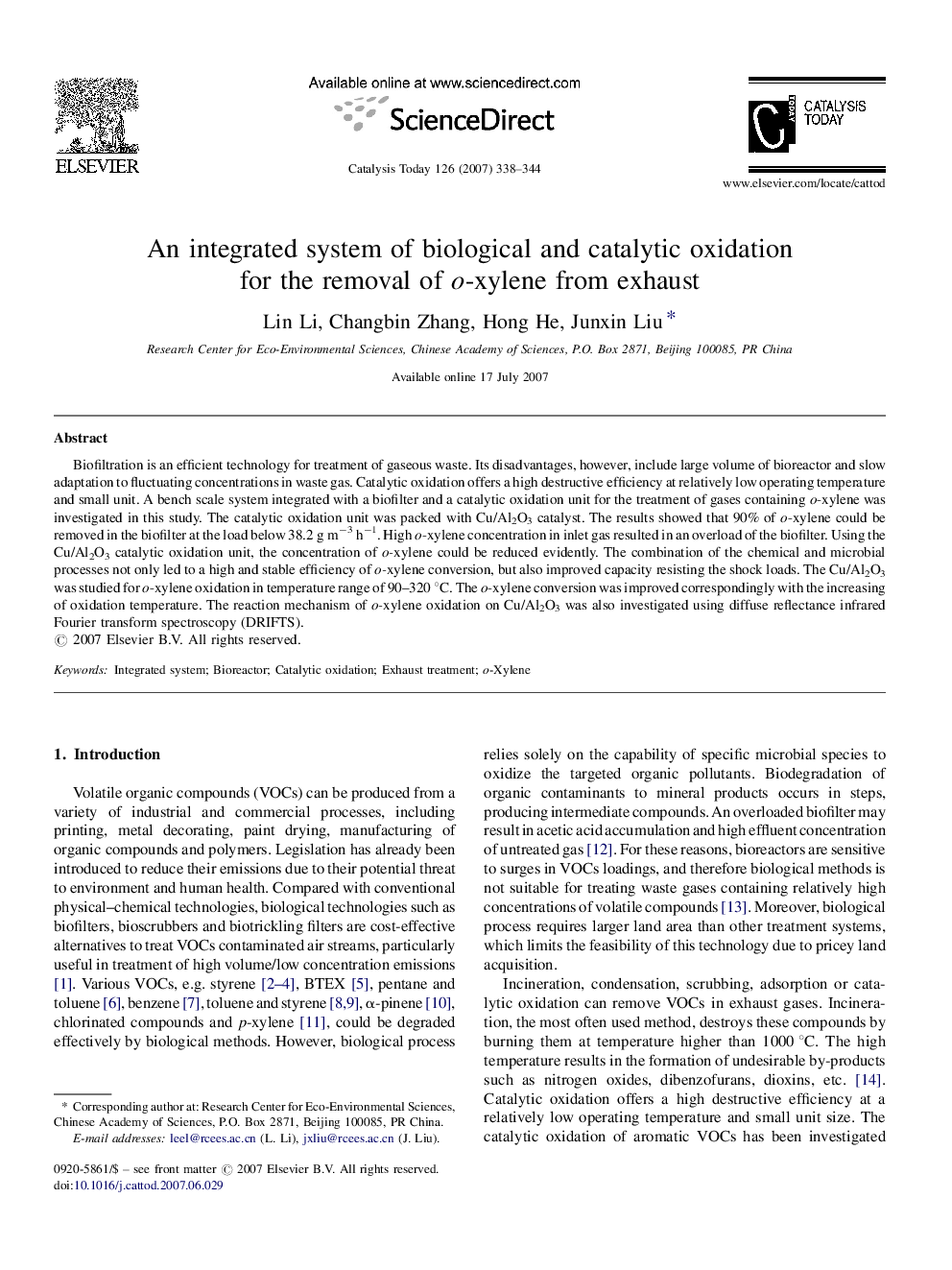| Article ID | Journal | Published Year | Pages | File Type |
|---|---|---|---|---|
| 57822 | Catalysis Today | 2007 | 7 Pages |
Biofiltration is an efficient technology for treatment of gaseous waste. Its disadvantages, however, include large volume of bioreactor and slow adaptation to fluctuating concentrations in waste gas. Catalytic oxidation offers a high destructive efficiency at relatively low operating temperature and small unit. A bench scale system integrated with a biofilter and a catalytic oxidation unit for the treatment of gases containing o-xylene was investigated in this study. The catalytic oxidation unit was packed with Cu/Al2O3 catalyst. The results showed that 90% of o-xylene could be removed in the biofilter at the load below 38.2 g m−3 h−1. High o-xylene concentration in inlet gas resulted in an overload of the biofilter. Using the Cu/Al2O3 catalytic oxidation unit, the concentration of o-xylene could be reduced evidently. The combination of the chemical and microbial processes not only led to a high and stable efficiency of o-xylene conversion, but also improved capacity resisting the shock loads. The Cu/Al2O3 was studied for o-xylene oxidation in temperature range of 90–320 °C. The o-xylene conversion was improved correspondingly with the increasing of oxidation temperature. The reaction mechanism of o-xylene oxidation on Cu/Al2O3 was also investigated using diffuse reflectance infrared Fourier transform spectroscopy (DRIFTS).
